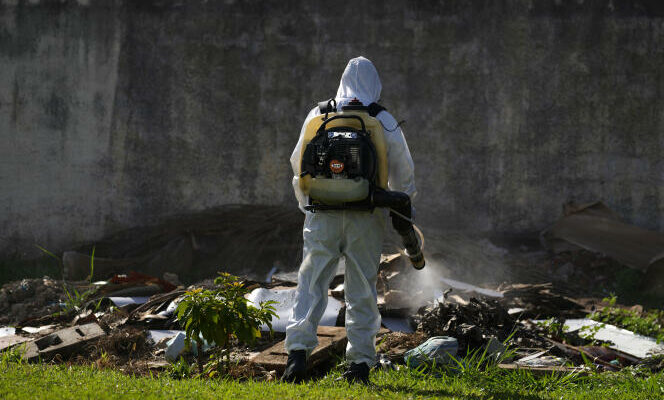There is a strong chance that South America, Central America and the Caribbean will experience their ” worse “ dengue epidemic. This was declared on Thursday March 28 by Jarbas Barbosa, director of the Pan American Health Organization (PAHO), regional branch of the World Health Organization, during a press conference. As of Tuesday March 26, more than 3.5 million cases had been recorded in the region. This is three times more than for the same period of 2023, a year during which 4.5 million cases were recorded in total.
Dengue is an arbovirosis, that is to say a disease caused by an arbovirus transmitted by a mosquito. It is signaled by a high fever, often associated with nausea, headache and vomiting. In rare cases, it develops into severe, potentially lethal forms. This year, dengue fever has already caused more than a thousand deaths in the OPS area. In 2023, the mortality rate stood at 51 deaths per 100,000 cases, according to the agency dashboard.
If the increase is noted in all the countries covered by PAHO, Brazil, Paraguay and Argentina account for 92% of cases and 87% of deaths. Mr. Barbosa emphasizes that the upward trend is already remarkable in countries where waves of dengue fever are expected rather in the second half of the year, such as Barbados, Costa Rica or Mexico. In addition, dengue fever is circulating in places where it had not previously been identified, notably in regions of Uruguay. So, “some countries may not be ready to face an increase in contagions”.
Environmental and “social” factors
In the Caribbean, more than 25,000 cases have been recorded in three months, said Rhonda Sealey-Thomas, deputy director of PAHO. Concerning the French Antilles, the latest bulletin from Public Health France reports a slight decline with, for the week of March 4 to 10, 180 cases suggestive of dengue in Guadeloupe and 320 in Martinique, compared to respectively 240 and 370 the week former. The fact remains that, considered over several months, the epidemic in Martinique is experiencing a “worrying progression”, according to the Regional Health Agency. Guyana, meanwhile, recorded 535 confirmed cases from March 4 to 10, compared to 690 the previous week.
In the eyes of the PAHO director, environmental factors can explain the resurgence of dengue, such as the increase in temperatures and the frequency of heat waves, droughts which lead populations to store water in reservoirs. where the mosquito vector – aedes aegypti – likes to settle down, or storms.
You have 35.88% of this article left to read. The rest is reserved for subscribers.
